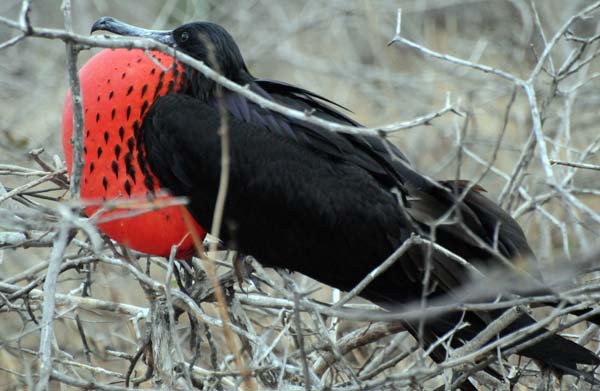Getting Friendly With Frigatebirds
I’m currently in the Galapagos, a wonderful paradise of watching birds, snorkeling, and marveling at the evidence of evolution that seems so obvious to us today but was a totally new idea to Darwin and the world when he was here. (Remember, it’s now known that evolution is only a theory in the same sense that gravity is a theory. We can’t dispute that it exists, and proceed to teach some silly divine ideas about how it is that a rock falls instead of its flying up into the air.) The Galapagos is a living laboratory for the study of speciation and how the environment and genes interact. (The mechanisms of evolution are still being studied and debated, however.) This Common Cactus-Finch is getting its moisture directly from the cactus using its uniquely qualified bill. It turns out that variations in bill shape and size – and how they interact with the environment – are much of what drives the evolution of the finches.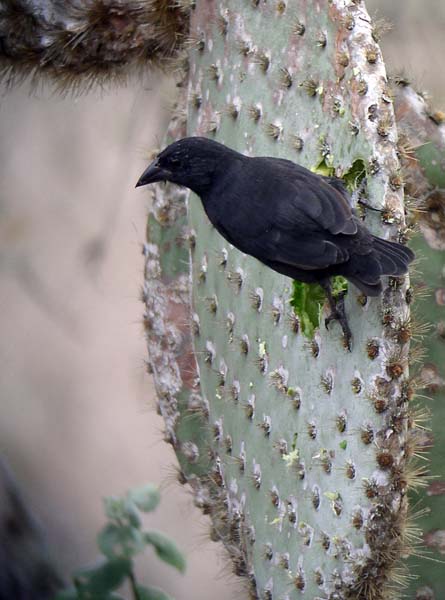
You may have read Gunnar Engblom’s news post here a few days ago about a recently published paper in the Proceedings of the Royal Society B that showed pretty conclusively that the Magnificent Frigatebirds in the Galapagos are genetically distinct enough from other populations to be considered a separate species. The data is pretty rock solid – showing that other Pacific and Atlantic birds are quite similar genetically, with the Galapagos Frigatebirds being very different. The amount of genetic difference leads to the calculation that the Galapagos birds have been diverging for several hundred thousand years – and have been distinctly separate for the past 22,000 years. This is quite amazing, considering that people have been able to just walk up to these birds and sample as much data as needed for centuries.
There are two species on the Galapagos, we get amazing views of them, especially on North Seymour and Tower. The female Great Frigatebird is easy to tell from its red orbital ring and paler brown bar on the upper surface of the wing, while the Galapagos Female has a purple orbital ring and grayer wing.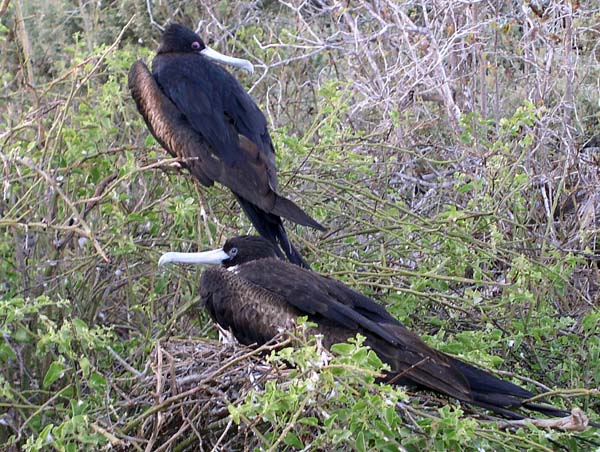
The male Great Frigatebird’s green gloss to the mantle feathers is quite distinctive.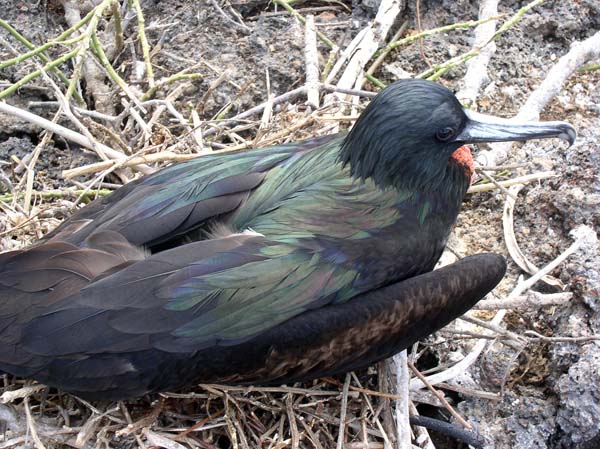
They also make a hilarious gurgling sound in display.
The Galapagos Frigatebird male is very similar to the Great, but his mantle feathers are a shiny purple, and the voice is quite different. Leg color is also different, but that’s not always visible. The Galapagos is slightly larger, apparent when they are flying together overhead.
This is an immature Great Frigatebird, with its distinctive buffy head.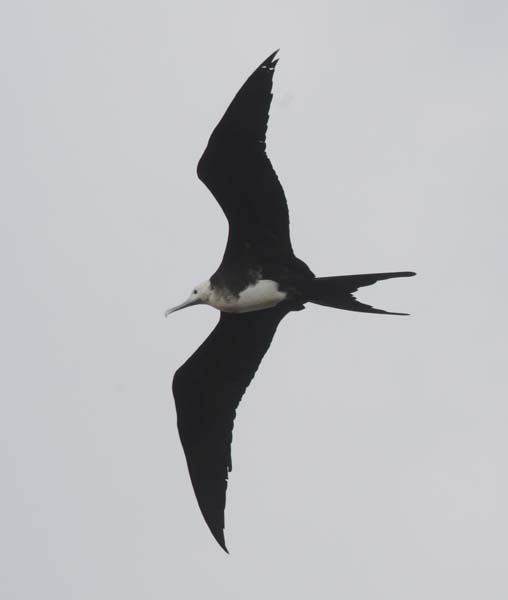
The male Galapagos Frigatebird at the top of this post appears to have some traces left of immature plumage in the breast.
In my post next Tuesday I’ll show some of the other great birds and wildlife that we found.

